The end of radio silence - a new method for communication with the spacecraft

In the conditions of spacecraft entry into the atmosphere at hypersonic speeds, a huge amount of heat is released, which not only places high demands on thermal loads on the materials of the descent vehicle, but also leads to the formation of plasma around the SKA.
This blocks (or rather distorts) the radio signals, with the result that the spacecraft is not able to communicate with its ground stations for several minutes.
The task of ensuring stable radio communications with descending spacecraft is very acute.
The task is also no less urgent in the military aspect: the RGSN of hypersonic missiles and combat units of an ICBM. For example:
3M-22 (“Zircon”) / in the photo demo BrahMos-II, but it is unlikely 3M-22 will be revealed:
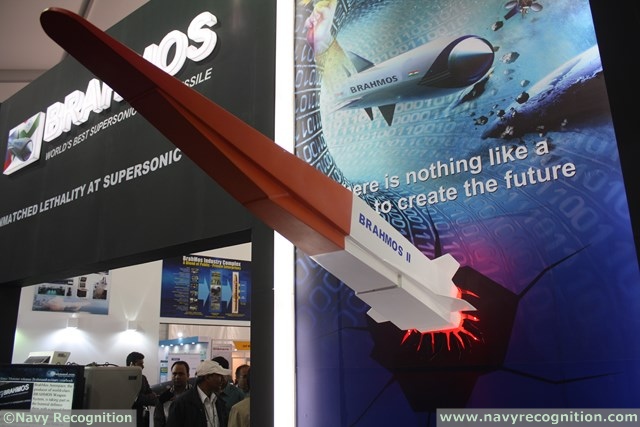
Object 4202 (Yu-71):

Radiolocation and radio communication through “such” plasma do not work: the total power of electromagnetic energy losses and radio noise radiation almost completely determine the reduction of the energy potential of the communication radio channel as a whole, increase significantly and predetermine the loss of radio communication on the descent trajectory.
The phenomenon of communication breakdown at the entrance to the atmosphere was discovered during the project “Mercury”, and then the programs “Gemini” and “Apollo”. It manifests itself at a height of decrease of about 90 kilometers and up to the mark of 40 kilometers - as a result of the rapid heating of the surface of a capsule falling in the atmosphere, a cloud film of plasma forms on its surface, acting as a kind of electromagnetic screen.
The effect is called (not officially) Radio Silence During Fiery Re-Entry.
At the end of the film “ Apollo-13 ”, which presents a failed lunar mission with three astronauts aboard it, tension arises among viewers, which is connected with the entrance of the spacecraft into the earth’s atmosphere. It was at that moment that the connection with the ship was interrupted, and flight operators in Houston America began to nervously smoke in those endlessly long and painful seconds. At this point, the spacecraft enters the atmosphere at the second cosmic velocity, which leads to its environment surrounded by hot ionized air, as a result of which communication with the Earth is interrupted.
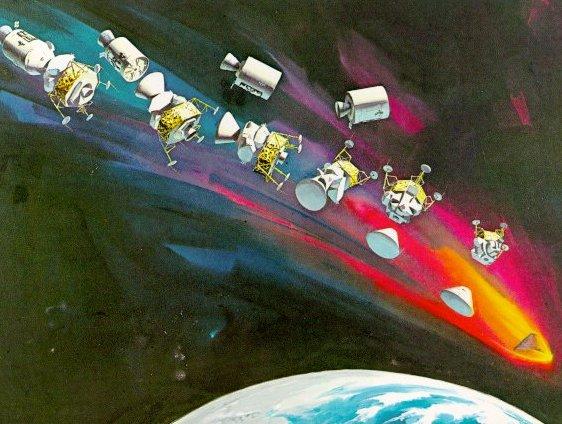
To make it clearer, I’ll present a video of the entry into the atmosphere of SKA Soyuz TMA-13M:
As the most relevant example, the loss of communication and telemetry during test launches of the USAF X-51A Scramjet.
There have been several attempts to solve this problem:
1. The Soviet approach (implemented).
- Low-directional microwave emitters-on-board antennas with heated heat shielding and molten material in thermal protection.
- On-board antennas with thermal protection, the original design of which has a reduced sensitivity of its radio transparency to the effects of high-temperature aerodynamic heating.
- Methods of radio lighting AO for the conditions of aerodynamic heating, providing a reduction of losses in the heated AO.
- The use of "long" heat-resistant antennas taken out of the plasma membrane film.
2. Chinese approach (draft)
Amplification of the signal, which can be created by resonance, or matched electromagnetic oscillations, between the plasma envelope and the surrounding, aircraft, a special layer. Scientists of the Celestial Empire propose to add a “matching layer” to create the necessary resonant conditions during a normal hypersonic flight.
It is assumed that the matching layer will work as a capacitor in a conventional electrical circuit. The plasma shell, on the other hand, acts as an inductor that prevents changes in the electrical current passing through it. When the capacitor and the inductor are connected together, they can form a resonant circuit.
As soon as resonance is reached, the energy will begin to circulate stably between the plasma and the matching layer, as in the case of conventional capacitance and inductance in an electrical circuit. As a result, the incoming radio signal from the Earth can spread through the matching layer and the plasma envelope, as if they do not exist .
Note: for effective operation of this approach, the thickness of the matching layer and the plasma shell must be less than the length of the electromagnetic waves used for communication with the aircraft.
As a consequence, the proposed method will not work if the frequency range of the antennas is too high, as at present.
3. American approach
In the era of the Space Shuttle, the problem was partially solved using the reusable craft form. Its aerodynamic design gave rise to areas with a lower plasma flow density, which allows limited communication: the descent module, CPM, in some parts of the trajectory.
Note: factors such as the angle of entry of the descent vehicle into the atmosphere, its speed (usually Max 20-25), and its aerodynamic shape affect the density of the flow of ionized gas.
The German Aerospace Center (Deutsches Zentrum für Luft- und Raumfahrt; DLR) together with researchers from Stanford University (Stanford University in California) conducted quite successful trials of the technology, which in the future will save astronauts from communication breakdown when entering the atmosphere and possibly ensure the functioning of the onboard GOS locators for hypersonic rockets or warheads.
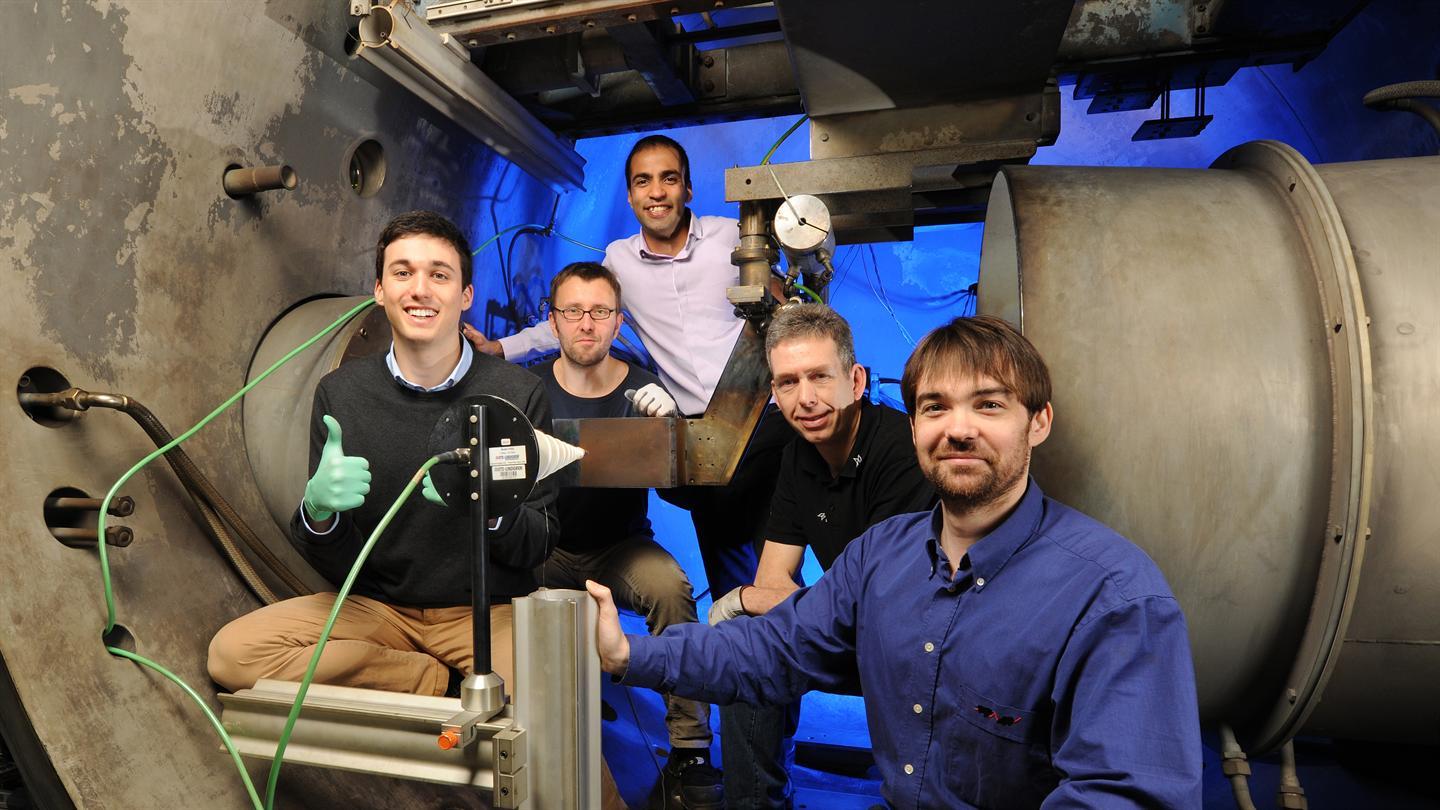
In January 2016, a joint startup experimented with positive results.
For the tests, we used the wind tunnel of the supersonic and hypersonic technologies of the DLR department at the Institute of Aerodynamics and Technology Flow in Cologne and a high-power arc heater for creating plasma.
The actual test conditions were recreated based on the mathematical models of American scientists from Stanford University, led by Siddarth Krishnamoorthy. A test device (simulator of the descent vehicle) consisting of a heat shield and a transmitting heat-resistant radio device (transmitter) was exposed to a plasma stream heated to several thousand degrees.
An antenna for receiving radio signals was installed outside the hot gas stream.
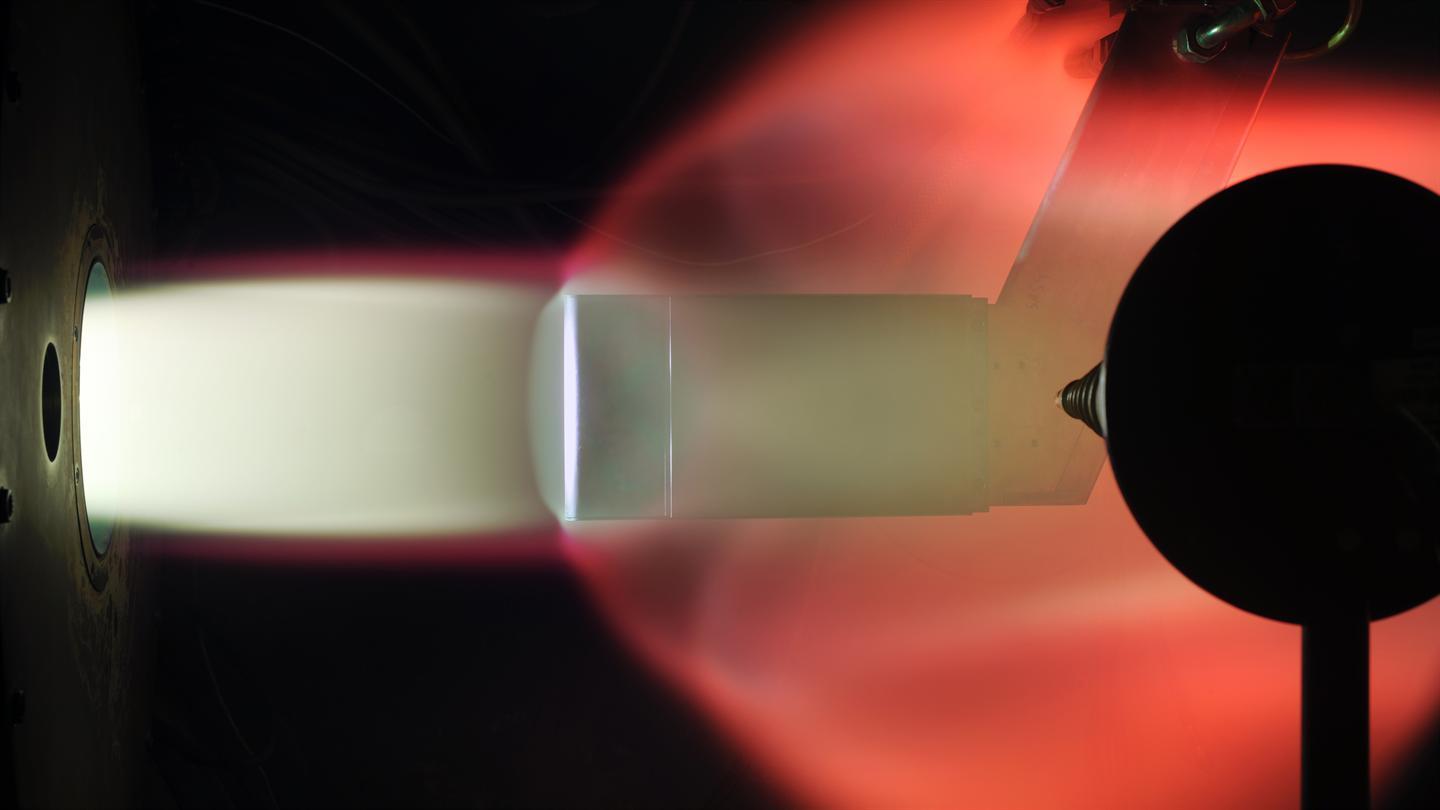
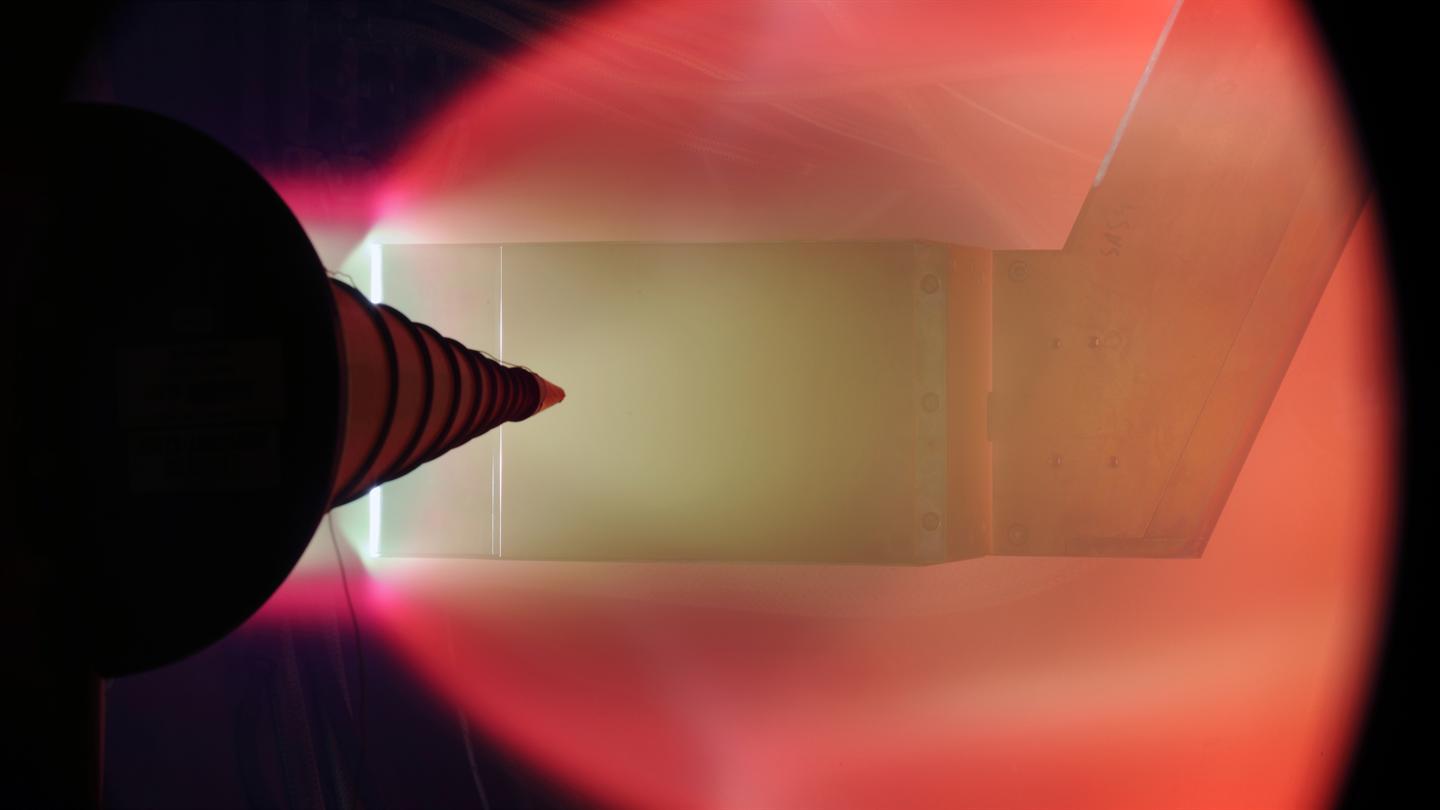
The essence of the idea: in the immediate vicinity of the transmitter antenna, a negative voltage field is generated, which repels the ionized plasma flow (negative ions and electrons), thereby opening a window in the plasma cocoon for radio signals.
This window cannot exist open for a long time, because:
- The plasma film is not stationary relative to the object due to high flow rates.

“There are positively charged ions in the plasma, which with great pleasure will be attracted to the negative field generator.

Therefore, the field pulsates, the voltage is pulsed: every few milliseconds. This interval is sufficient to ensure the transmission and reception of data.
Until now, the radio communication method through the plasma shell using a pulsed electric field was developed only in numerical simulation.
Krishnamurti himself is impressed with the simplicity and speed of cooperation: “Within three months, we had the opportunity to test our methods in practice and, at the same time, we had the data and developments from the DLR in this area.”
Ali Gulhan, Head of Supersonic and Hypersonic Technology, has an equally positive view: “The cooperation between DLR and Stanford University is an ideal basis for solving the problem of disrupting communication with the descent satellite.”
The radio communication technology will be further improved and adapted for use not only in the new, but also existing spacecraft.
Some terms:
AO-antenna box.
SCA (CA, CA) - landing a spacecraft (in variations)
GSN- seeker.
RGSN (ARGSN) - radio okatsionnaya GOS.
use documents, photos and video:
Improving the efficiency of the operation of onboard radio communication systems of descent capsules (dissertation topic and abstract on HAC 05.12.07, Candidate of Technical Sciences Cordero, Liborio)
